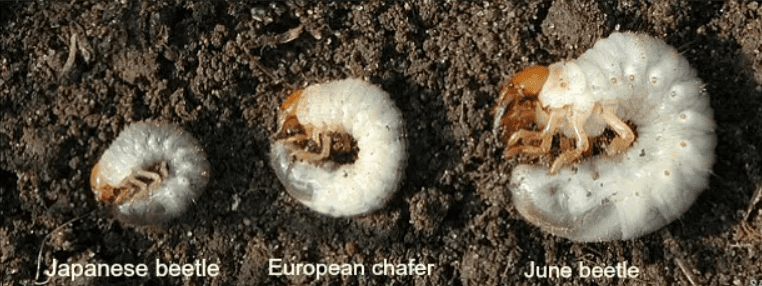Homeowners across Midland and the surrounding areas are noticing increased lawn and landscape damage this spring — and grubs are a major reason why. A series of mild winters has allowed grub populations to thrive, resulting in more severe and widespread issues than in previous years. At Reder Landscaping, we are closely monitoring these conditions and are ready to help you protect your property.
Typically, colder, prolonged winters help reduce grub populations by naturally eliminating many larvae before spring. However, with warmer temperatures, pests like Japanese beetle larvae, European chafers, and June beetles are surviving in greater numbers. These grubs feed on the roots of turfgrass, causing significant damage — from dead patches and thinning grass to soft, spongy areas. In addition, wildlife such as skunks and raccoons often dig through lawns to reach the grubs, creating even more extensive surface damage.
Not Just Lawns Are Suffering, All of Your Landscape is at Risk
While grub damage is most visible in turfgrass, the problem extends well beyond the lawn. Grubs can feed on the roots of trees, shrubs, and garden plants, leading to symptoms such as wilting, yellowing foliage, stunted growth, and even plant dieback. Root damage severely limits a plant’s ability to absorb water and nutrients, causing long-term stress that can leave your landscape vulnerable to disease and decline.
Early detection and proper treatment are critical to maintaining the health and beauty of your property.
What to Do?
To help safeguard your landscape against grub damage, consider the following steps:
- Inspect Your Lawn: Check for thinning, discolored patches or sections of turf that lift easily. White, C-shaped grubs found beneath the surface are a clear sign of infestation.
- Apply Preventative Treatments: The most effective time for grub control applications is mid- to late-summer, targeting grubs before they cause significant root damage.
- Maintain Proper Watering Practices: Promote deep root growth with less frequent, thorough watering.
- Monitor Plants and Trees: Watch for signs of stress and inspect the root zones if symptoms appear without an obvious cause.
Let Us Help!
At Reder Landscaping, we offer comprehensive grub control programs designed to prevent and manage infestations effectively. Our experienced team can evaluate your lawn and landscape, develop a tailored treatment plan, and provide ongoing maintenance to protect your investment.
Whether you are seeking preventative care, treatment for existing damage, or a full landscape health assessment, we are here to assist. Trust the experts at Reder Landscaping to help keep your property looking its best — season after season.
Click here or call 989-835-8260 for a full landscape evaluation and treatment plan.

